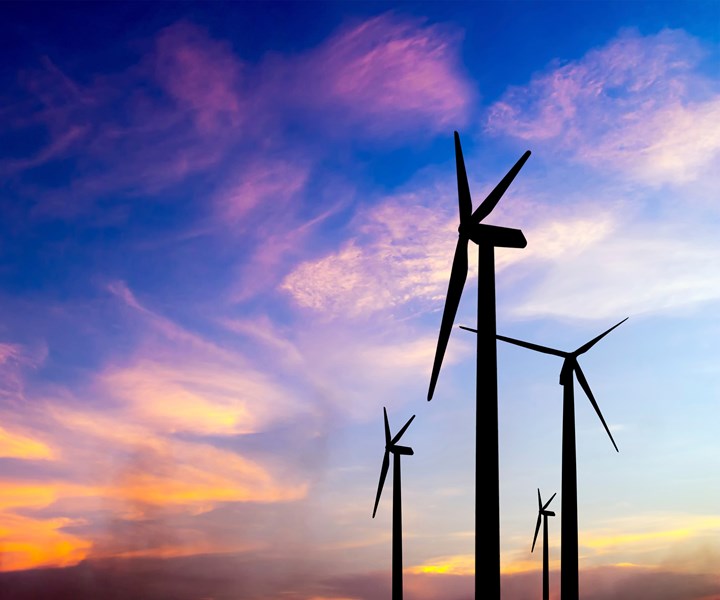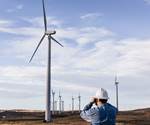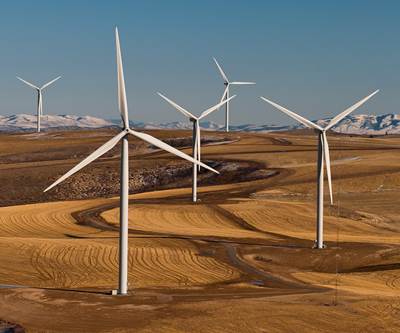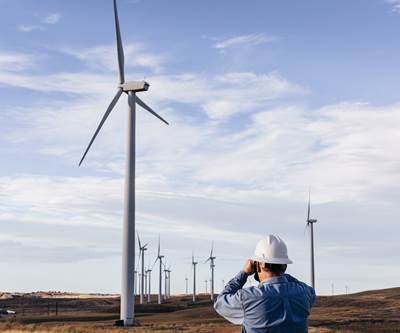U.S. wind power reaches milestone 100 gigawatts in third quarter 2019
The American Wind Energy Association (AWEA) also reports that the U.S. wind energy pipeline has grown to an expected 46.4 gigawatts of wind energy.

According to the American Wind Energy Association’s (AWEA; Washington, D.C., U.S.) recently released third quarter 2019 market report, U.S. wind farms have now surpassed more than 100 gigawatts of energy, enough to power 32 million American homes.
According to the AWEA, this is a significant milestone, as the U.S. wind industry has grown from 25 gigawatts of wind power in the beginning of 2008.
“100 gigawatts of wind isn’t just a number, it’s the product of 40 years of ingenuity and work from the more than 114,000 Americans directly employed by the wind industry,” says Tom Kiernan, AWEA CEO. “Their hard work has paid off from pioneering California to the booming wind belt in America’s heartland and our first offshore project in New England waters. Wind now supplies clean and efficient power to the equivalent of 32 million American homes, sustains 500 U.S. factories, and delivers more than one billion dollars a year in new revenue to rural communities and states.”
Wind installations for the year total 3,667 megawatts, a 123% increase over the first three quarters of 2018.
The AWEA reports wind energy in the U.S. supports 114,000 jobs, 500 factories and $1 billion each year in lease payments to landowners combined with state and local taxes. Technology innovations have cut the cost of wind energy by a reported 69% in the last decade, contributing to lower overall electricity costs for American homes and businesses. The AWEA also reports that 100 gigawatts of wind power avoids greenhouse gas emissions equal to 240 million metric tons of carbon dioxide each year, or roughly 13% of yearly U.S. power sector emissions.
AWEA’s third quarter 2019 report first revealed the U.S. has reached 100,125 megawatts of wind energy, with more than 57,700 wind turbines spinning across 41 states and two U.S. territories. This milestone was reached as developers installed eight new wind projects totaling 1,927 megawatts in the third quarter, the highest third quarter for installations on record. Wind installations for the year total 3,667 megawatts, a 123% increase over the first three quarters of 2018.
The near-term wind project pipeline grew to yet another record in the third quarter of 2019, reaching 46.5 gigawatts.
Strong wind power deployment is expected to continue. The near-term wind project pipeline grew to yet another record in the third quarter of 2019, reaching 46.5 gigawatts — equal to almost half of the wind energy operating today. There are now 22,651 megawatts under construction and an additional 23,844 megawatts in advanced development, including 5,792 megawatts of offshore wind. The total pipeline increased 11% over the second quarter, and 22% year-over-year, as project developers announced 10,090 megawatts of new projects in the third quarter. Project developers and power purchasers announced 1,379 megawatts of power purchase agreements (PPA) in the third quarter of 2019, contributing to a total of 6,179 megawatts for the year. Corporate customers including Sprint, Gap and Honda signed up for 888 megawatts of wind. Utilities announced plans to build and own 4,198 megawatts of new wind projects, including 2,640 megawatts of offshore wind. States also continued their push for offshore wind, with New York selecting 1,696 megawatts from two projects to help meet its goal of 9,000 megawatts of offshore wind by 2035, while the governor of Virginia issued an Executive Order for the state to develop 2,500 megawatts of offshore wind by 2026.
“Wind power is growing rapidly, especially with a major new market opportunity offshore,” Kiernan says. “Americans will reap the benefits of the next 100 gigawatts of clean, reliable wind energy in much less time and at lower cost. As we speak, wind farms with a record combined capacity of over 46 gigawatts are already in the works and expected to come online in the next few years.”
The AWEA reported wind development growth by 6,146 megawatts in the first quarter of 2019, and growth of 7,290 megawatts in new construction announced in the second quarter of 2019.
Related Content
Novel composite technology replaces welded joints in tubular structures
The Tree Composites TC-joint replaces traditional welding in jacket foundations for offshore wind turbine generator applications, advancing the world’s quest for fast, sustainable energy deployment.
Read MoreDrag-based wind turbine design for higher energy capture
Claiming significantly higher power generation capacity than traditional blades, Xenecore aims to scale up its current monocoque, fan-shaped wind blades, made via compression molded carbon fiber/epoxy with I-beam ribs and microsphere structural foam.
Read MoreCollins Aerospace to lead COCOLIH2T project
Project for thermoplastic composite liquid hydrogen tanks aims for two demonstrators and TRL 4 by 2025.
Read MoreHexagon Purus opens new U.S. facility to manufacture composite hydrogen tanks
CW attends the opening of Westminster, Maryland, site and shares the company’s history, vision and leading role in H2 storage systems.
Read MoreRead Next
AWEA reports record U.S. wind farm activity in Q2 2019
The U.S. wind project pipeline grew 7% in the second quarter, with 7,290 megawatts in new construction and advanced development activity announced.
Read MoreU.S. wind development grows by 6,146 megawatts in first quarter
The American Wind Energy Association’s first quarter 2019 report also says the total pipeline of U.S. wind energy development has reached a record-breaking 39,161 megawatts.
Read MoreAll-recycled, needle-punched nonwoven CFRP slashes carbon footprint of Formula 2 seat
Dallara and Tenowo collaborate to produce a race-ready Formula 2 seat using recycled carbon fiber, reducing CO2 emissions by 97.5% compared to virgin materials.
Read More
.jpg;width=70;height=70;mode=crop)












.jpg;maxWidth=300;quality=90)









